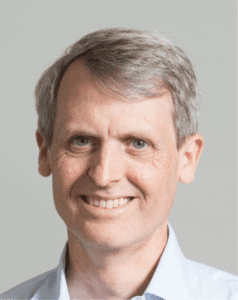Posted By: Sara Cullinan, PhD, Deputy Editor, AJHG
Each month, the editors of The American Journal of Human Genetics interview an author of a recently published paper. This month we check in with Jamie (@VandenbergJamie) to discuss his recent papers “A massively parallel assay accurately discriminates between functionally normal and abnormal variants in a hotspot domain of KCNH2” and “A calibrated functional patch-clamp assay to enhance clinical variant interpretation in KCNH2-related long QT syndrome”.

SC: What motivated you to start working on this project?
JV: I have worked on HERG potassium channels for >20 years. Initially I just wanted to understand why these channels have such unusual properties compared to other potassium channels. As part of this work, I studied the function of hundreds of HERG mutants, which included many mutants that had been reported to occur in patients. In 2014 I had a discussion with Arthur Moss, one of the doyens of Long QT syndrome, and I asked him whether it would be worthwhile determining the function of all the HERG mutants that occurred in patients with long QT syndrome. He was extremely enthusiastic about the idea, so I decided to take it on.
The two things that really made it possible though were (i) the purchase of a syncropatch 384PE high-throughput automated patch clamp system, courtesy of a large infrastructure grant from the NSW Government, and (ii) a super-enthusiastic post-doc in my lab, Chai-Ann Ng, who took the initiative and asked if he could spearhead this project; he is the one who has driven this project over the last few years.
SC: What about the papers/project most excites you?
JV: The most exciting part for me is that the syncropatch assay we have developed will enable us to generate accurate functional assessments for all clinically occurring mutants in Long QT syndrome type 2 and significantly reduce the proportion of variants classified as VUSs. This will have real impact for patients and their families.
SC: Thinking about the bigger picture, what implications do you see from this work for the larger human genetics community?
JV: The development and validation of the massively parallel HERG trafficking assay will enable us to generate a comprehensive database of the functional effect of every possible single nucleotide variant in the HERG channel gene. Then everyone who undergoes genetic testing and receives a report of a variant in KCNH2 will be able to find out immediately whether it affects channel function or not. Many groups are developing similar assays (both massively parallel trafficking assays and automated patch clamp assays) for other ion channels; this will have impacts for a wide range of inherited disorders including epilepsies, myotonias and polycystic kidney disease, to name just a few.
SC: What advice do you have for trainees/young scientists?
JV: Have the courage to tackle challenging problems, and don’t be afraid to take the initiative. I also always tell new trainees to read David Paydarfar and William Schwartz’s 2001 Editorial in Science “An Algorithm for Discovery”.
SC: And for fun, tell us something about your life outside of the lab.
JV: I like to have two weeks off every summer, when I leave all my electronic devices at home. I spend my time reading novels, stand-up paddle boarding and taking walks in the bush.
